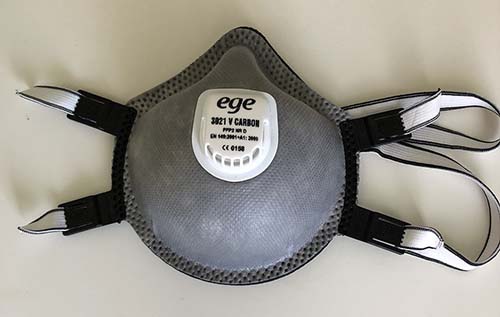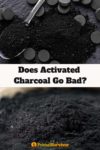Activated charcoal is an incredibly porous form of carbon. Because it is so porous, substances – including microbes, toxins, and gases — will stick to the carbon.
This makes activated charcoal great for:
But activated charcoal’s ability to adsorb substances also means it can “fill up.”
If not stored correctly, activated charcoal can go bad in the sense that it no longer works well anymore.
Here is what you need to know about activated charcoal shelf life and how to store it long-term.
Also read: What’s the Difference between Charcoal and Activated Charcoal?
Does Activated Charcoal Go Bad?
No, activated charcoal does not go bad. However, it can adsorb substances from the environment and fill to capacity. Once this happens, it loses its ability to adsorb new substances – thus making it useless for filtering water, face masks, treating infections, etc.
Shelf Life of Activated Charcoal
If stored in airtight packaging, activated charcoal will last forever without losing effectiveness.
If stored in plastic packaging, moisture and contaminants from the air will slowly pass through, causing the activated charcoal to lose effectiveness. Because of this, many activated charcoal products have a listed shelf life of 1 to 3 years.
If left exposed to the air, activated charcoal could become fully adsorbed very quickly – especially if the air was high in pollutants or humid.
How to Store Activated Charcoal
To make sure activated charcoal remains effective, you must store it in airtight packaging.
Here are some of the best options for long-term storage.
1. Original Packaging
Some brands of activated charcoal package their products in airtight foil packaging. In this case, you can keep the AC in its original packaging.
Note that plastic is not airtight. Plastic has tiny holes, which slowly allow contaminants and moisture to pass through. On top of that, plastic has chemicals that will gas off and get adsorbed by the charcoal. If you bought AC in plastic packaging, you’ll want to repackage it for long-term storage.
2. Mylar Bags
Mylar is a metallic polyester film that is entirely airtight: it won’t let any moisture or air through. It is very popular for food storage, and the top emergency food brands even use it for packaging their meals.
To store activated charcoal in Mylar bags, put the AC inside and use an iron to seal the bag shut. There is no need to use oxygen absorbers when storing charcoal in Mylar. Read how to seal Mylar bags here.
Buy quality mylar bags at reasonable prices here.
3. Mason Jars
Another easy way to store activated charcoal is in mason jars. One with good two-piece lids will be airtight and keep your charcoal from going bad. Remember to secure the jars so the glass doesn’t break during a natural disaster.
What about Activated Charcoal Filters and Face Masks?

Many air filters, water filters, and PPE masks contain activated charcoal. Unfortunately, these are often packaged in thin plastic, which does not provide adequate protection from the surroundings. Over time, the charcoal in the products will adsorb moisture and contaminants from the air and become less effective.
To keep charcoal filters and face masks from going bad, you’ll need to repackage them. Mylar bags are generally the best solution; it’s easier to fit them in a Mylar bag than a glass jar.
Can You Reuse Old Activated Charcoal?
It is possible to restore used activated charcoal. The process involves heating the activated charcoal to very high temperatures.
Unfortunately, it’s challenging to do and even more difficult to do reliably.
You may also want to read How to Make Activated Charcoal At Home.
https://sciencing.com/how-to-regenerate-activated-charcoal-5630591.html
https://wcponline.com/2005/06/22/care-handling-activated-carbon/
https://www.researchgate.net/post/Is_there_anyone_who_knows_an_estimated_lifespan_of_activated_charcoal_for_air_purification
https://readingplastic.com/plastic-outgassing/
https://www.nontoxu.com/qa-posts/do-plastics-off-gas



I bought a 5 gallon bucket of activated charcoal about 5 years ago. Would a white plastic five gal bucket, with the charcoal in a sealed heavy plastic bag, still be good?
There are a number of suppliers out there that offer Activated Charcoal at prices all over the spectrum. Some even indicate the type of material/wood that it is made from (i.e., sap wood, coconut shells, etc.). What and who would you recommend for use in a post SHTF application for a home-made water filter application? The type of filter I am referring to is a coffee filter/activated charcoal/fine sand/coarser sand/gravel type that can be made and used off grid. Water would be boiled after filtering.
Great website with quality articles.